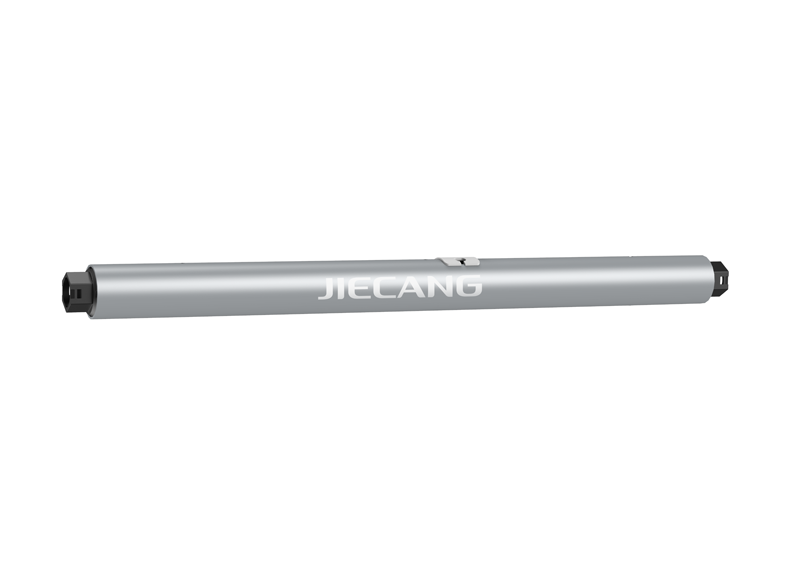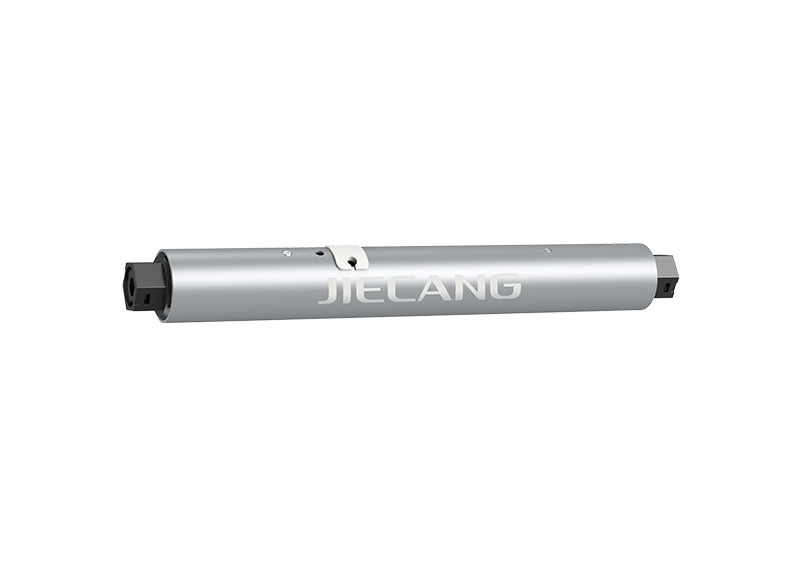Now that smart technology is common, blinds can be controlled more easily. Motorized blinds, also called motorized shades, are popular for their convenience, privacy, and security. The blind motor is the key part that makes smart control possible. So, how do you pick the right blind motor? Here are some important tips to help you choose.
There are several types of blind motors, such as DC, AC, stepper, and brushless motors. Each type works differently, which affects things like starting power, efficiency, speed control, precision, and noise. These features help determine which motor is best for different settings.
1. DC Blind Motor (Direct Current Blind Motor): The speed is controlled by changes in current, making it suitable for applications that require speed regulation. It starts and stops smoothly, reducing impact on the blinds. Its compact size allows installation in tight spaces. It is ideal for home and small office roller shutters, as well as environments requiring low noise, such as bedrooms and conference rooms, and settings that require remote control or integration with a smart home system.
2. AC blind motor (Alternating Current blind motor): Typically operates using a rotating magnetic field, suitable for high power and long-duration applications such as commercial locations, large windows, or high-rise buildings. It provides stronger torque, is more durable, requires relatively little maintenance, and has a long service life.
3. Stepper blind motor: Achieves precise angular movement through step control, suitable for applications requiring high-position precision, such as high-end residences or exhibition spaces, where automation levels are high and closely integrated with smart home systems.
4. Brushless blind motor: Replaces mechanical brushes with electronic control, offering higher efficiency, longer service life, and lower energy consumption. It runs quietly, making it ideal for noise-sensitive environments, such as bedrooms, libraries, and systems requiring high performance in smart homes.

Power and torque are important when choosing a motor for motorized blind. Looking closely at these factors helps you pick a motor that runs smoothly and lasts longer. Choosing the right power and torque can also lower energy use and maintenance costs.
1. Power: Select the suitable blind motor power based on the roller shutter's size and weight to ensure smooth operation.
2. Torque: Ensure that the blind motor’s torque is sufficient to overcome the friction and resistance encountered by the roller shutter during operation.
When deciding how to control your motorized Blind, think about your environment, what you need, your budget, whether it works with your other devices, and how easy it is to maintain.
1) Control Types:
a. Manual Control: Utilizes mechanical devices, such as ropes or rods, which are suitable for simple and low-cost applications. It is inexpensive and simple, but lacks automation.
b. Electric Control: Utilizes blind motors to operate the blinds, with common control methods including remote controls and electric switches. It offers high convenience but requires power and may involve wiring issues.
c. Smart Control: Integrates sensors and home automation systems to automatically adjust settings based on factors such as light, temperature, and time. It enables automated management, enhancing comfort and energy efficiency, but requires a higher initial investment and specialized technical expertise.
d. Integrated Control: Manages multiple blind motors and devices through a single control panel, suitable for large buildings or smart home systems. It can integrate with other smart devices, such as lights and air conditioning, to adjust the shutter based on environmental changes, thereby enhancing the overall level of automation.
2) Usage Environment:
a. Indoor vs. Outdoor: Outdoor roller shutters may require better wind resistance, making electric control a more suitable option. For indoor environments, manual or electric control can be chosen depending on actual needs.
b. Climatic Conditions: In windy or high-temperature areas, electric or integrated control may have an advantage, as they can adjust in response to real-time weather changes.
3) User Needs:
a. Convenience: For users seeking higher convenience and comfort, smart or electric control is a better choice.
b. Functionality: Smart control provides a more comprehensive solution for features such as timed switching and light detection.
4) Budget: Manual control is typically the most cost-effective option, suitable for users with limited budgets. Electric and smart control may have higher initial costs but can reduce operational costs over time through energy savings and improved comfort.
5) Technical Compatibility: If users already have a smart home system, selecting a smart roller shutter control method that is compatible with their existing devices will be more convenient.
6) Maintenance and Upgrades: Electric and smart control systems require regular maintenance; therefore, users should consider future maintenance costs and technical support requirements.
Noise is an important factor when picking a motor for motorized roller shutters, especially in quiet places like home theaters, offices, or bedrooms. Noise can affect comfort and how much you enjoy the space. The type of motor, how it is driven, how it is installed, the materials used, and lubrication all play a role in how much noise the system makes.
1) Blind Motor Type:
a. DC blind motor: Typically operates more smoothly with lower noise levels.
b. AC blind motor: May produce higher noise, especially under heavy loads.
2) Drive Method:
a. Chain Drive: Can generate significant mechanical noise.
b. Belt Drive: Relatively quiet, but belt tension must be properly adjusted.
c. Gear Drive: Typically quiet but may produce vibrations and noise at high speeds.
3) Installation Method: Improper installation may cause blind motor vibration, increasing noise. Ensuring proper blind motor installation helps reduce operational noise.
4) Material Selection: The materials used for the blind motor housing and internal components also impact noise levels. High-quality materials can effectively reduce noise.
5) Lubrication: Proper lubrication can reduce friction, thus lowering noise levels. Regular checking and maintenance of blind motor lubrication are necessary.
Durability and protection ratings are two crucial factors. These directly affect the blind motor's service life, performance stability, and adaptability to different environmental conditions.
1)Durability Factors:
a. Material Selection: Common materials used for blind motor housings include aluminum alloy, plastic, and stainless steel. Aluminum alloy and stainless steel are highly resistant to corrosion and impact, making them suitable for outdoor use.
b. Service Life: The service life of different blind motors varies, typically ranging from 10,000 to 100,000 operations. Understanding the blind motor's rated service life helps users select the right product for their needs.
c. Load Capacity: Ensure that the blind motor's load capacity matches the weight and usage frequency of the roller shutter to avoid malfunction due to overload.
d. Working Temperature: The blind motor's temperature range should suit the environment. blind motors that can withstand extreme temperatures are essential for use in harsh weather conditions.
e. Maintenance and Upkeep: Select blind motors that are easy to disassemble and maintain, allowing for regular inspection, cleaning, and part replacement to extend the blind motor's service life.
2)Protection Rating Factors:
a. IP Rating: The blind motor's protection level is denoted by the IP code, where the first digit represents dust protection and the second digit represents water resistance.
b. Corrosion Resistance: blind motors with corrosion-resistant coatings, such as galvanized or anodized surfaces, are better suited for installation in coastal or humid environments.
c. Shock and Vibration Resistance: The blind motor design should have vibration resistance to avoid damage from movement. Choose blind motors with tested vibration-resistant designs for enhanced adaptability.
d. Environmental Adaptability: Ensure blind motors have excellent waterproof performance, particularly in humid or rainy environments, to prevent short circuits or failures caused by water ingress.

How you install the blind motor affects how well it works, how easy it is to use, and how simple it is to maintain. The most common ways to install are on the wall, on the ceiling, or on the window frame.
1) Wall-Mounted Installation: Suitable for environments with limited space, where the blind motor is fixed to a wall or window frame. The advantage is space saving, but it may impact the blind motor’s operational stability.
2) Ceiling-Mounted Installation: The blind motor is installed within the ceiling, suitable for larger blinds. This method is discreet and neat but requires professional installation and consideration of ceiling removal during maintenance.
3) Window Frame-Mounted Installation: The blind motor is fixed directly to the top or side of the window frame. This method is simple and easy to operate, ideal for standard curtains. However, it may affect the window's aesthetics.
Safety is very important. Making sure the blind motor is safe to use protects people and helps the equipment last longer. Here are some key things to keep in mind:
1) Overload Protection: The blind motor should have an overload protection feature that automatically stops operation when the load exceeds the rated value, preventing damage or fire hazards.
2) Anti-Pinch Protection: The blind motor should automatically stop or reverse operation if an obstacle is encountered during the raising or lowering of the shutter, preventing injury.
3) Temperature Protection: blind motors should have temperature protection to shut off the blind motor if it overheats, preventing fire hazards.
4) Electrical Safety: blind motors and electrical components should have excellent insulation to prevent electrical shocks from leakage or short circuits.
5) Mechanical Safety: The blind motor design should consider mechanical safety, such as high-strength materials and rational structural layouts to prevent mechanical failures during use.
6) Safety Certification: Choose blind motors with relevant safety certifications (e.g., CE, UL, CCC) to ensure compliance with safety standards.
Price and budget matter a lot. Think about the brand, quality, features, installation, and maintenance costs to make sure you get a motor that fits your needs and is worth the money.
Work with suppliers who have a good reputation and offer quality products and reliable service. For large orders, check their reputation, product quality, after-sales support, price, delivery ability, customer reviews, and legal compliance. Choosing a trustworthy supplier helps ensure you get consistent quality and support.
We are JlECANG who has specialized in Linear Motion Technology for more than 20 years. We can make customized and professional project about Blind Motor for you. If you have any inquiry or question in this field, we are pleased to assist you in any time.
Ф25mm DC tubular motor - Battery Powered
Ф35mm AC Tubular motor-Mechanical Limit
Curtain motor - Built-in WiFi module